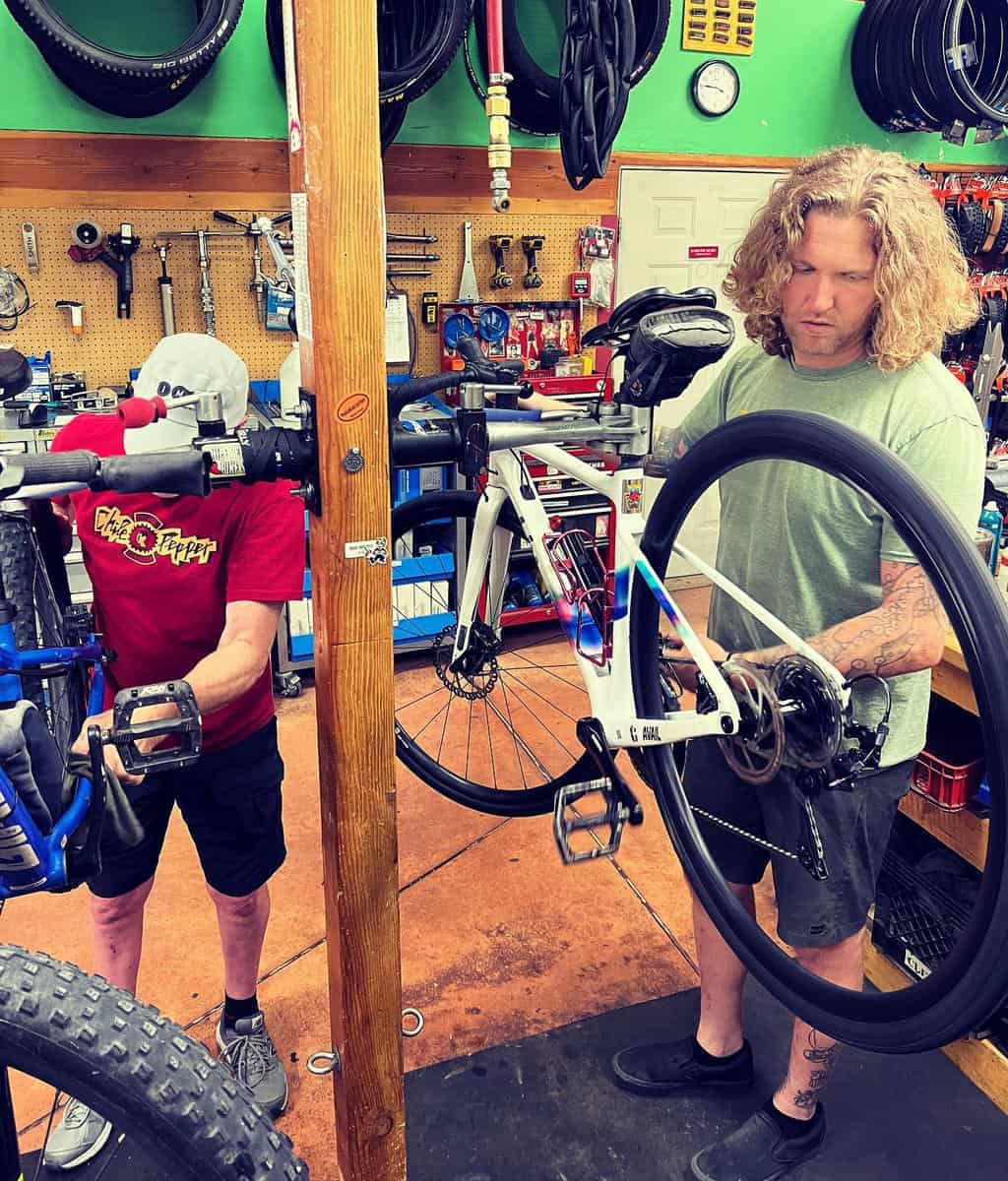
Remember those auto tire commercials that stress there’s only one thing actually touching the road?? Yeah, tires. Kinda a big deal to bike setup and ride quality.
Within the world of mountain biking there are only about 100,000 combinations of tires and wheels. How hard can it be to get the right setup? Actually, easier than expected. And usually once you find your preferred setup, its almost a set it and forget it thing that becomes consistent for almost all riding. But, if you have defaulted into a bad setup, and you’ve set it and forgot it, you may be missing out on a lot of performance potential.
Lets talk about a little spoken about thing – spoke tension. Spoke tension controls how stiff or compliant your wheels are. Yes, your wheels flex A LOT under you as you ride. Just look up some slow motion shots on you tube of some enduro rider smashing some rough sections of trails. You will see flex everywhere, especially in the wheels. Depending on what your goal is, its ok to experiment with different spoke tension. Different wheel manufacturers also have stiffer or softer feeling wheels. For example, Industry Nine is a super high end wheel company, and their stuff is notoriously stiff. Many people love the wheels, many people hate them, as they are too stiff for some. Just like suspension settings, try tensioning and detensioning your spokes and ride the same trail over and over so you can feel the difference. Pay close attention to bike composure, snappines, sluggishness, rider fatigue, rider confidence, traction, predictability, etc.
Next is rim material. Carbon vs Aluminum once again. Carbon rims will always feel stiffer, but will always be lighter. Rotating mass is a big deal when it comes to weight. Carbon rims will also stay straight and not get “dings” in them. If they are going to fail, it will be catastrophic, but it takes a lot to get them to break!.
Lastly the tire, and arguably the most important part of the wheel. You can have a $2500 wheel setup and with the wrong tires make it feel like a walmart setup. On mountain bike tires, you are generally looking at categories. Those in general are XC, Enduro/Trail, Downhill, and subcategories are for wet, dry, rocky, hardpack, loose etc.
You can put a mud tire on your bike cause it looks mean and you may think you will have the best traction ever, but if you ride it on dry hardpack conditions it will try to destroy you. It would feel washy and you would have zero traction.
Most popular tires out there sit in a happy medium of good performance on all terrain. One example is the Maxxis Minion DHF. It comes in all kinds of rubber compounds, casing strengths, and widths. It performs pretty darn well in all conditions. Many of us at Chile Pepper Bikes run that tire front and rear all the time. It has great turning knobs, decent rolling speed, and has all the braking power needed for us.
Tire pressure? Yep it’s important. Too soft and your knobs don’t bite into the terrain, too hard and there’s no compliance to the terrain and traction is terrible. Cutting to the chase, most of us run between 26 – 28 psi in the front tire, and 28 – 30 psi in the rear tire. All of us run tubeless tires, there’s really no other way to have a good setup in our opinion. Ride quality is way better with a tubeless setup, and flat tires are less common. Rarely do any of us run a Cush Core insert system. Those change the feel of the tire a lot, as there is less air volume in the tire, so the tire feels “bouncier” with the insert system in there.
Wheel setups on nice bikes can be as much cost as the frame of the bike itself. They are a huge part of the bike performance. Don’t forget about getting yours set up for you and where you ride!
Go Ride Your Bike!!!
